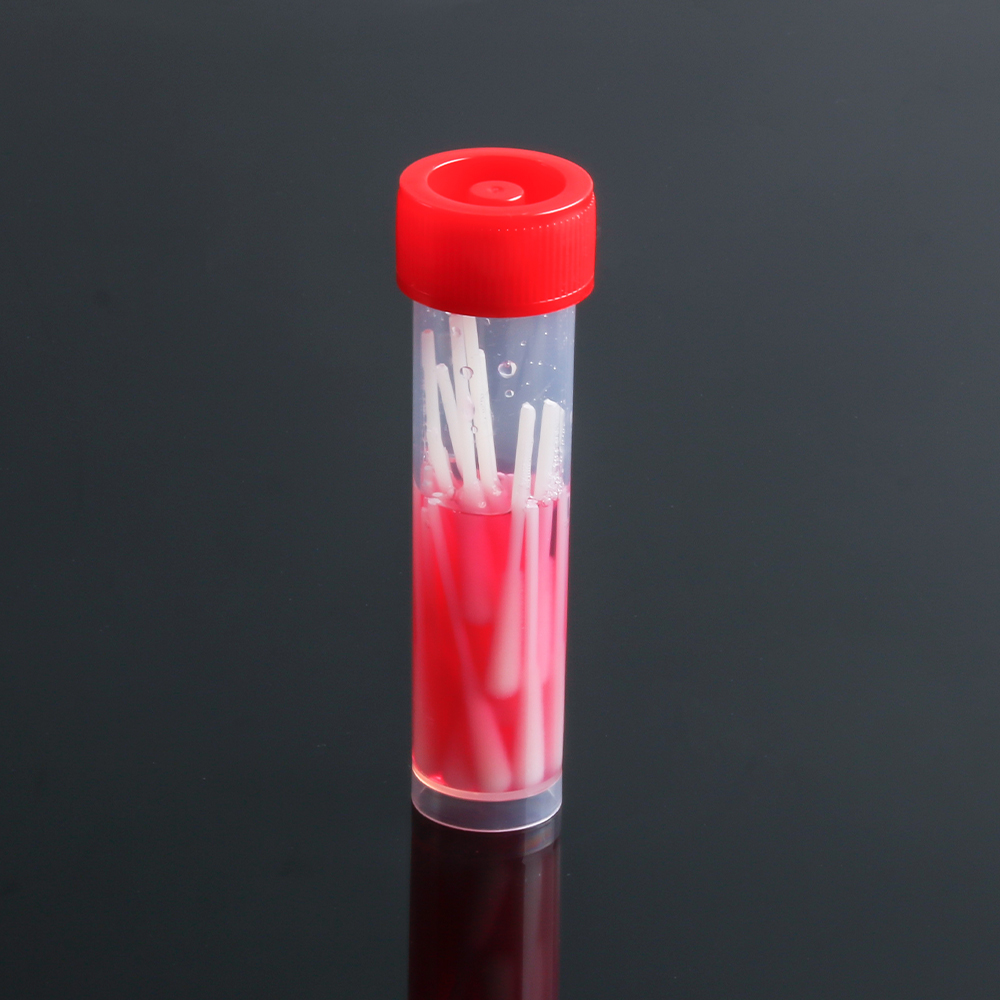Nucleic acid testing is the collection of pharyngeal swabs, sputum or lower respiratory tract specimens and real-time fluorescent RT-PCR to detect novel coronavirus nucleic acid, if positive, the diagnosis of novel coronavirus infection can be confirmed, which is the basis for confirming the diagnosis of novel coronavirus pneumonia. In addition to testing for viral nucleic acid, the specimen can also be tested for a high degree of homology with the novel coronavirus, and if so, the diagnosis of novel coronavirus pneumonia can be confirmed. The virus is highly infectious and human-to-human, but it is sensitive to temperature and ultraviolet light from the sun.
Nucleic acid test collection method.
(Nucleic acid test nasal swab)
1. Ask the patient to keep his head still and remove the secretions from the surface in the anterior nasal aperture. The collector can stand to the side of the collected person to reduce occupational exposure due to coughing and sneezing and to relieve the collector's stress.
2、Measure the distance from the nostril to the root of the ear with a swab and mark it with your hand.
3、Gently insert the swab through the nasal cavity in a vertical nose (face) direction into the nostril with a wall-touching sensation until the finger touches the nose, allowing the swab to remain in the nose for 15-30 seconds, and then gently rotate it 3 times.
4、Put the swab into the virus delivery medium and break the swab rod so that it is completely placed in the tube.
5、Screw the tube cover, mark it well and put it into a plastic bag and seal it well.
6、Send the specimen for examination in time
(Nucleic acid detection pharyngeal swab)
1、The collector is assisted by tongue depressor, the collectee opens his mouth to make "ah" sound, the palatal lobe is lifted to expose the posterior pharyngeal wall, the swab crosses the tongue root and reaches the narrow pharyngeal lesion, quickly wipe both sides of the palatal arch and pharynx, tonsil secretions.
2, put the swab into the virus transport medium, assist the tube cover to break the swab rod, so that it is completely placed in the tube.
3 、Tighten the tube cover, mark it well and put it into a plastic bag and seal it well.
4、Send the specimen for testing in a timely manner.
Nucleic acid testing precautions.
①, to avoid vomiting, it is recommended not to eat 2 hours before sampling.
②, 30 minutes before sampling, please do not smoke, alcohol, chewing gum or betel nut
Do not touch the head of the swab with your hand or other objects at any time.
④, during the collection of pharyngeal swabs the detector head back, open the mouth to make "ah ~" sound, which helps to expose the throat, no special discomfort during the sampling process, but some sensitive personnel may experience irritating dry cough, nausea, vomiting and other symptoms, which can be relieved after rest, the subject can cooperate with the collection personnel to try to relax and keep breathing, most of the personnel can avoid discomfort.
⑤. The test subject should wear a good mask, while preparing another clean mask, to maintain a distance of more than 1 meter between people, please do not crowd.
⑥、When accepting pharyngeal swab sampling, remove the mask and fold and encapsulate it in a plastic bag and put it in your pocket, wash your hands immediately after collecting the sample or wipe your hands with non-washing alcohol, put on a spare mask, and put the discarded mask into the designated medical waste bin (please do not discard medical waste or spit anywhere)
(vii) If the choice is to do nasal swabs, the collection personnel should be informed whether the nasal septum is curved and the history of nasal surgery before collecting the nasal swabs; during the process, nasal soreness and itchiness may occur, stimulating sneezing, which can be immediately covered by tissues or elbows.
⑧. A small amount of nasal bleeding may occur after nasopharyngeal swab collection, which generally does not require special treatment, but please go to the hospital promptly for treatment if the bleeding is large. (Our current general nucleic acid testing is basically done with a pharyngeal swab).


